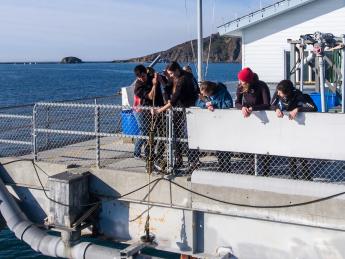Cal Poly Research Finds Strong Support for Ocean Protection Worldwide

People around the world strongly support ocean conservation measures, according to a new study of public perceptions of marine threats and protection
Seven in 10 people around the world believe the oceans are threatened and support their protection, according to research by Cal Poly and two partner universities.
The study, which was published in the journal Ocean and Coastal Management, provides a rare comparison of how the public views marine threats by human activity and protection efforts around the globe.
“There’s a lot of scientific thought put into ocean conservation around the world. But there’s much less information out there on what people actually think about the ocean and some of the protection measures,” said study co-author Jennifer O’Leary, a Cal Poly and California Sea Grant biologist. “This is important because anytime we are introducing protection measures, we’re asking people to change their behavior. And we know from behavioral research that focusing on what people already think is important can make changes easier for people to accept.”
Researchers from Cal Poly, California Sea Grant and Dalhousie University in Nova Scotia, Canada, reviewed a set of surveys from more than 32,000 people in 21 countries. They found that 70 percent of respondents believe the marine environment is under threat from human activities, and nearly half (45 percent) believe the threat is high or very high.
“People around the world are aware that the ocean is threatened and what are the major threats to the ocean,” said lead author Heike Lotze, a researcher at Dalhousie University.
Pollution and fishing were the greatest threats cited by respondents, followed by habitat alteration, climate change and biodiversity loss. Scientists generally have ranked fishing and habitat loss as the highest threats to marine environments.
Between countries, the researchers found differences in what people identified as the top three threats. Fishing, for example, ranked as a top threat in North America and New Zealand, while habitat loss and climate change ranked higher in Europe.
Pollution, on the other hand, consistently ranked as a top danger across all the nations. The researchers attribute that to the visible nature of the problem or high levels of publicity on marine pollution.
While the public showed strong support for marine protected areas (MPAs), the rules governing these areas vary widely in practice as does the public’s understanding of what an MPA actually means, the researchers noted.
“This study gives a sense of what we currently know about public perceptions, but it also highlights a tremendous need to understand public views on a much broader scale,” O’Leary said.




